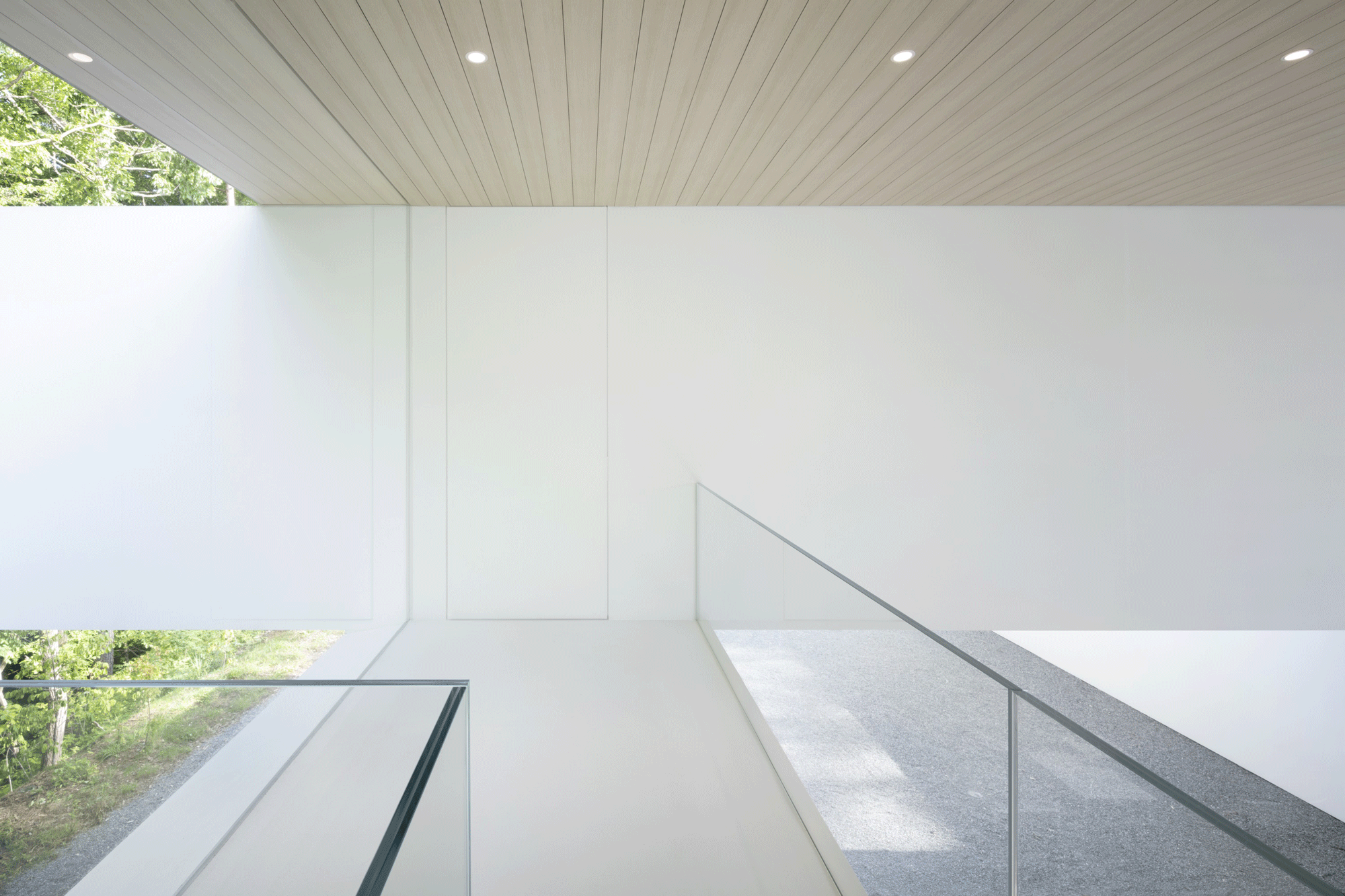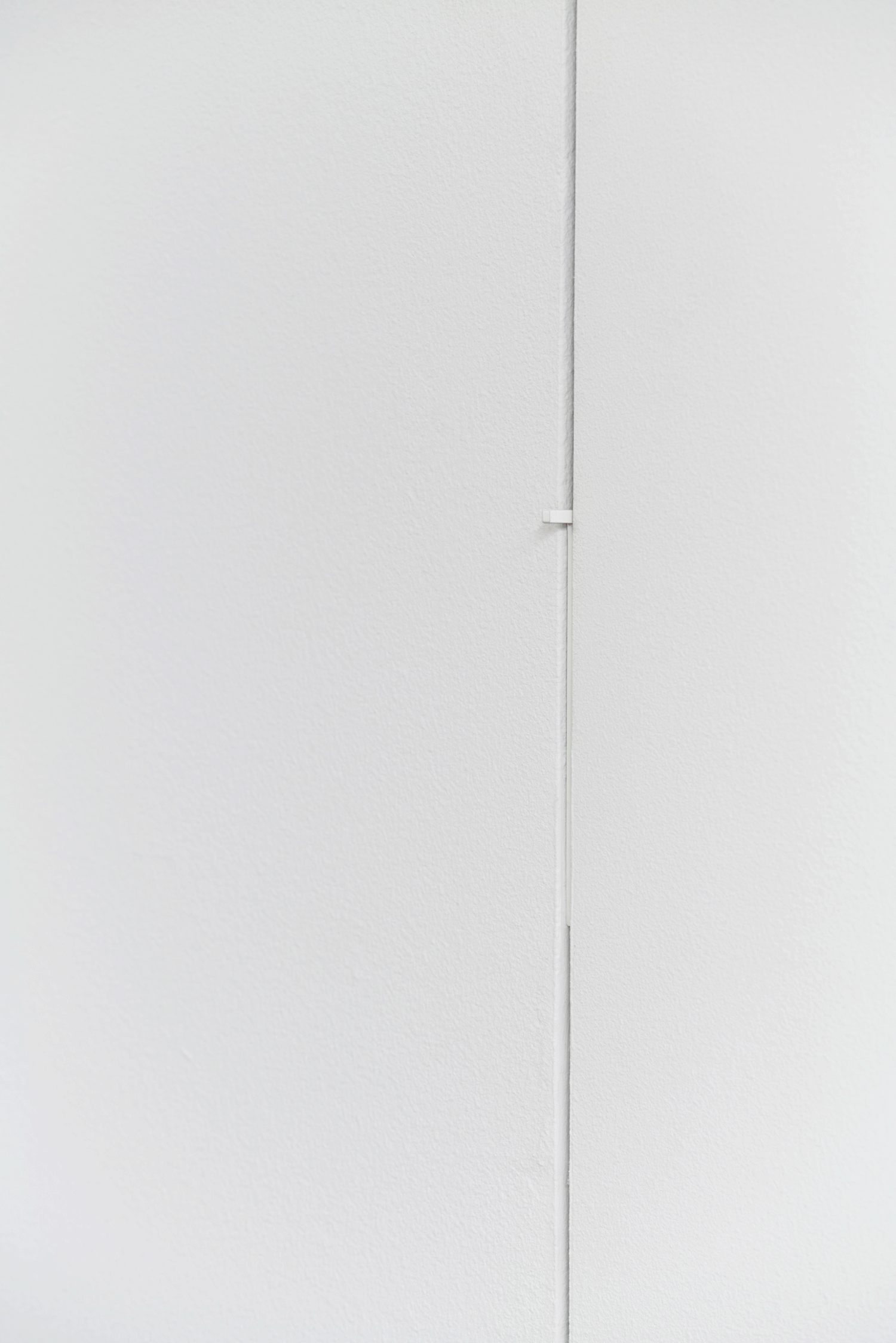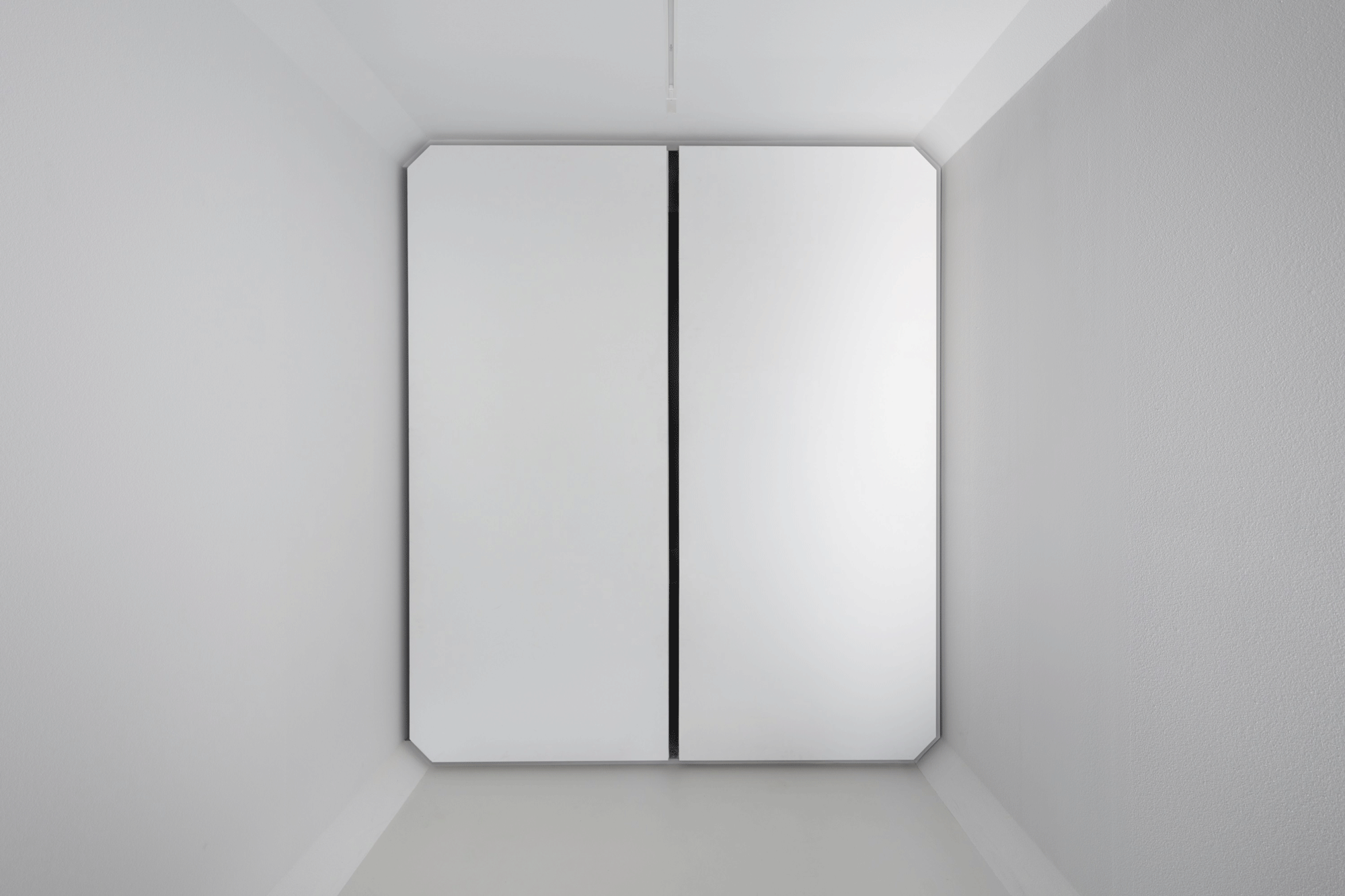本文由 nendo 授权mooool发表,欢迎转发,禁止以mooool编辑版本转载。
Thanks nendo for authorizing the publication of the project on mooool, Text description provided by nendo.
nendo:本案位于日本长野县宫田町,是一个用于存放家具、产品和艺术品的储藏设施,附带一个宾馆。这座隧道式建筑坐落在安静的自然环境中,可以聆听溪流蜿蜒穿过茂密红松林,建筑结合了预制和预应力施工方法。
nendo:A storage facility for archiving furniture, products, and artwork in Miyota-machi, Nagano Prefecture, with a guesthouse attached. Located in a quiet and nature-rich environment where streams weave through a thick forest of red pine, the tunnel-like architecture took shape through a combination of precast and prestressed construction methods.




▽项目视频 The video
对于预制建筑而言,一般的部件通常会先在工厂加工成型,然后在现场组装。箱形涵洞(箱形的混凝土结构)正是预制结构在基础设施项目中的应用案例之一,它们通常用于储藏埋于地下的水道、通道、电线和通信线缆等。然而,由于该方法本身并不能满足本案建筑所要求的无缝组合和堆叠形式,因此还借助了预应力施工技术以将各部分连接在一起。
For precast construction, common parts are molded in a factory and assembled on site. An example of its applications in infrastructure projects is the box culvert (box-shaped concrete structures), used to store waterways, pathways, power lines, and communication lines buried underground. However, since the method itself does not provide a leak-free composition nor does it allow for stacking, both necessary for this architecture, prestressing was also used to connect the parts together.







预应力法是一种应用于桥梁等土木工程结构的技术,在这种方法中,需要保证各部件对齐,然后用钢丝拧紧以使各部分连接起来。这种方法可以形成无缝且光滑的表面,并获得良好的密封性和耐用性。
The prestressing method is a technique used in civil engineering structures such as bridges, in which the parts are aligned and then tightened with wires to connect them. This results in a seamless and smooth surface finish, obtaining a tight seal, and durability.





该建筑共使用了63个方形管道构件,每个重约12吨,其尺寸取决于运输卡车的装载尺寸和起重机能吊起的重量。建筑入口采用一般箱形涵洞同样会使用的加固方式,可以起到支撑和增强抗震的作用。相互连接的方形管道形成了一个细长的隧道式空间,内部尺寸约为2 x 2.3米。14根钢索被用来连接每条“隧道”,并谨慎地对每根钢索施加均匀的张力,这项操作包括随着时间的推移逐渐收紧钢索,直到每根钢索承受的张力达到46吨。
The common square-shaped parts weigh approximately 12 tons each, and a total of 63 of these parts were used. The size of the parts was derived from the loading size of the delivery truck and the weight that could be lifted by a crane. The 45-degree reinforcement at the entry corner, which is also found in general box culverts, serves as a brace and enhances earthquake resistance. By connecting these parts, a slender, tunnel-shaped space with an internal dimension of approximately 2 x 2.3 m was created. Fourteen wires were used to connect each “tunnel” and care was taken to apply uniform tension to each wire at all times. The work involved gradually tightening the wires over time until a tension of 46 tons was finally applied to each.
▽项目建造过程视频 Video of project construction process





建筑由四个堆叠的“隧道”组成,中间区域覆盖着一个屋顶。除一个纵深约为40米的狭长储藏室外,建筑还包括两个较小的储藏室,预计随着收藏品的增加,未来还会增加更多的储藏空间。厨房、浴室、卫生间等用水设施集中分布在一层,一个紧凑的卧室和书房位于二层空间。
The building is composed of four stacked “tunnels” covered with a roof in the center. In addition to a long, narrow storage room with a depth of approximately 40 meters, there are two smaller storage rooms, but it is envisioned that more will be added to the site in the future as the collection grows. The kitchen, bathroom, toilet, and other water facilities are concentrated on the first floor, and a compact bedroom and a study are located on the second floor.












窗户设计尽可能避免使用金属框架,高度透明的玻璃长达10米,以与日式屏风相同的方式固定在凹槽里。室外铺设的碎石和植物也布置到了室内,融合了内外部空间。
The windows were made without metal frames as much as possible, and high-transparency glass measuring up to 10 meters in length was fixed into the grooves in the same manner as shoji screens. The gravel and plantings used in the exterior were also arranged in the interior to draw the outside environment into the interior.






为了更方便行走,在铺设砾石前,地面经过了树脂硬化处理。其做法并非通常情况下那样只在砾石上浇筑树脂,而是先把树脂涂在地基上,然后再铺上砾石,这样表面就不会变得过于光滑。
To make it easier to walk on, the gravel was partially hardened with resin. Instead of just pouring resin over the gravel, which is usually the case, the resin was applied to the base first and then gravel was laid on it so that the surface wouldn’t become glossy.



此外,设计师考虑到如果按照普通方式安装门把手,会显得突兀,所以设计了一个具有创意的门把手,隐藏在门与墙之间的缝隙中。
In addition, the door handles would have looked abrupt if installed as-is, so an original handle was designed, which hides in the small gap between the door and the wall.

浴缸被直接建在地面上,这样可以使水面与地板平齐,也延续了隧道的形状。
The bathtub is carved into the floor, such that the water surface aligns with the floor, creating the appearance that the tunnel shape is continuous.



由此产生的空间不是建筑,而是一个将工程概念和产品设计细节相结合的项目。
The resulting space is less architectural, but rather a project that combines civil engineering concepts with product design details.











▽场地平面图 Site plan
▽1/2层平面图 1F & 2F Plan
▽剖面图 Section
项目名称:culvert guesthouse
合作者:Noritaka Ishibayashi、Ryota Maruyama、Daisuke Maeda、NIITSU-GUMI、P. S. Mitsubishi Construction
摄影师:Daici Ano、Takumi Ota
拍摄和编辑:Toru Shiomi
拍摄:Takahisa Araki、Masaya Yoshimura
Project Name: culvert guesthouse
Collaborator: Noritaka Ishibayashi、Ryota Maruyama、Daisuke Maeda、NIITSU-GUMI、P. S. Mitsubishi Construction
Photographer: Daici Ano、Takumi Ota
filming and editing: Toru Shiomi
filming: Takahisa Araki、Masaya Yoshimura
“ 一个将工程概念和产品设计细节相结合的项目,堆叠的白色建筑体坐落在安静的自然环境中,其内部储存空间可以随需求变化而增加。”
审稿编辑: SIM
更多 Read more about: nendo









0 Comments